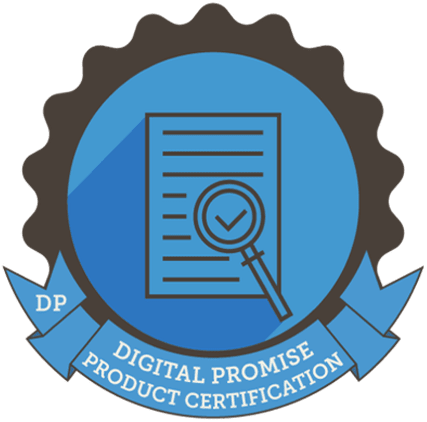EVERFI Research Center | Supports positive learning outcomes
See how and why EVERFI supports positive learning outcomes for all students.

EVERFI Approach
Develop with Experts
We work with external and in-house subject-matter experts to build learning experiences that deliver quality content to address the missing learning layer.
Driven by Data
We use pre- and post-learning assessments and surveys to drive insights into how our content influences learner knowledge, attitudes, and behaviors.
Actively Evaluate Effectiveness
We develop research-based products and services and work continuously to verify their efficacy across educational settings to support deep and sustained learning.
Iterate and Improve
We use course data, learner surveys, and feedback from teachers to guide iterative improvements to our content and learning platform.
Efficacy and Outcomes Research
The "Why" Behind EVERFI Efficacy

EVERFI’s extensive K-12 content and interactive learning experiences readily fulfill the rigorous criteria set forth by ESSA (Every Student Succeeds Act) federal requirements for Tier 4 evidence of efficacy.1 Our product is forged upon research-backed theory of action statements and a well-defined logic model. Logic models are visual representations of an education product’s key features that are informed by research and indicate how the product is likely to improve relevant outcomes. EVERFI partnered with Empirical Education to document the learning science and research behind the design of our product, and earned the Research-Based Learning Product Design Certification from Digital Promise.
Goals:
- To provide K-12 educators and students with free digital content on topics not sufficiently addressed by curriculums. *
- To create interactive and accessible content aligned to standards that is grounded in real-world contexts, and easily integrated into instruction to support learner critical-life skill development. **
Initial product development, and subsequent iteration, are driven by these resources. They provide a clear rationale for why our content and design decisions are expected to positively impact students beyond just learning. Our work does not stop there. The EVERFI research team includes Ph.D. trained researchers dedicated to continuously evaluating the impact and efficacy of our products both internally and through partnerships with independent research organizations. We leverage qualitative and quantitative data to assess implementation and impact to inform product development and improvements. For the educators that use EVERFI courses and the organizations that support them, the logic model summarizes why they are effective, what the indicators of success look like, and what improvements can be made moving forward to enhance effectiveness.
EVERFI is committed to current and future rigorous impact and efficacy evaluations of our products beyond the logic model to ensure we continue to provide content and learning experiences that deliver meaningful impact.
1US Department of Education. (2016). Non-regulatory guidance: Using evidence to strengthen education investments. Retrieved from https://www2.ed.gov/policy/elsec/leg/essa/guidanceuseseinvestment.pdf
*EVERFI offers digital content covering the following topic areas: Financial Education, Career Readiness, Health & Wellness, Social Emotional Learning, Cultural Literacy, Digital Literacy & Wellness, STEM, Academic Readiness, Sustainability Education
**Critical life skills include: self-efficacy, self-awareness, self-management, social awareness, relationship skills, responsible decision making, problem solving, critical thinking, effective communication, reflection, goal-setting, information-seeking, help-seeking, perspective-taking
Archived Research
- Effects of AlcoholEdu for College on Alcohol-Related Problems Among Freshmen: A Randomized Multicampus Trial. Read Now
- Population-Level Administration of AlcoholEdu for College: An ARIMA Time-Series Analysis. Read Now
- Exploring the Potential Campus-Level Impact of Online Universal Sexual Assault Prevention Education. Read Now
- Evaluating a Health Education Web Site: The Case of AlcoholEdu. Read Now
- Web-Based Alcohol Prevention for Incoming College Students: A Randomized Controlled Trial. Read Now
- Reductions in Drinking and Alcohol-Related Harms Reported by First-Year College Students Taking an Online Alcohol Education Course: A Randomized Trial. Read Now
Reach Out to Learn More
Want to learn more about our research methods or want to collaborate on a research study? Submit the form and someone will reach out as soon as possible.










